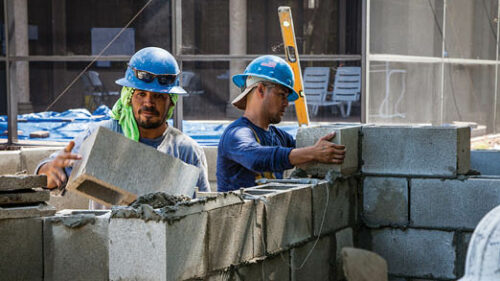As we enter the summer months, one thing that will be on workers’ minds is the heat. And, for good reason. According to the Occupational Safety and Health Administration (OSHA), 18 of the last 19 summers were the hottest on record, causing an average of over 3,500 heat-related worker injuries and illnesses each year. Unfortunately, dozens of workers also lose their lives each year in heat-related fatalities.
Due to these alarming trends, in April 2022 OSHA released a National Emphasis Program (NEP) focused on proactively inspecting workplaces for heat-related hazards in 70 high-risk general industries, construction, maritime, and agricultural industries. The NEP sets priority days when the heat index is expected to be 80 degrees or higher, when OSHA will target these high-risk industries to ensure employers have taken precautions necessary to protect workers from heat-related hazards.
While compliance is certainly a focus, especially with this new NEP in place, employers realize other benefits when workers are protected from the heat.
For example: A worker fatigued by heat is more likely to make errors that can result in costly rework. Similarly, workers affected by heat may suffer from lapses in judgment that cause them to take risks they might not otherwise have taken.
OSHA Approach to Heat Stress Prevention
The reasons to “do the right thing” are plentiful. But, what are those right things with regard to heat stress prevention? OSHA suggests a five-prong approach, and I’ve outlined the approach in this blog.
Acclimatization
According to OSHA, almost half of heat-related deaths occur on a worker’s very first day on the job and over 70 percent occur during the first week. For this reason, it is critical that employers set up procedures to acclimatize new workers to heat, including reduced schedules for the first 1-2 weeks, giving new workers more frequent rest breaks, using a buddy system, and more.
OSHA and NIOSH recommend the “Rule of 20 percent” for building heat tolerance, which starts a new worker at 20 percent of the normal workday and increases work duration by an additional 20 percent each day, until the worker is performing a normal schedule. OSHA provides significant information on acclimatization and protecting new workers on this website.
Water
Proper hydration is essential to prevent heat-related illness. Workers should be encouraged to drink at least 8 ounces of water every 20 minutes while working in the heat — and not just if they are thirsty.
OSHA also encourages employers to consider electrolyte-containing beverages, such as sports drinks, when workers are exposed to heat for more than two hours. Workers lose salt and other electrolytes when they sweat, which can cause muscle cramps and other health problems. Water alone cannot replace electrolytes.
Rest
When heat stress is high, employers should require workers to take breaks. That’s right, require — not just offer. Due to tight schedules and labor challenges, workers and supervisors might be tempted to skip breaks, which is never safe. The length and frequency of rest breaks should increase as heat stress rises.
In general, workers should be taking hourly breaks whenever heat stress exceeds the limits shown in Table 2 under Determination of Whether the Work is Too Hot section on the Heat Hazard Recognition page.
How long is long enough for rest breaks? That depends on factors, including environmental heat (wet bulb globe temperature [WBGT]), the worker’s physical activity level, and the individual worker’s personal risk factors.
The location of the breaks also matters. If workers rest in a cooler location, they will be ready to resume work more quickly. Breaks should last longer if there is no cool location for workers to rest.
Shade
Find a cool location where workers at each jobsite/worksite can take their breaks and recover from the heat. This can be a bit more challenging in outdoor environments like jobsites, but it can include a shady area, an air-conditioned vehicle, a nearby building or tent, or an area with fans and misting devices. In these cases, the cooler, the better.
Where possible, workers will undoubtedly appreciate a temperature-controlled environment, like a jobsite trailer as compared to shade alone, which may still expose them to high humidity
Indoors, workers should be allowed to rest in a cool or air-conditioned area away from heat sources, such as ovens and furnaces.
For more information about engineering and work practice controls that can help workers “beat the heat,” visit OSHA’s website.
Training
Supervisors and workers should be trained to recognize and respond to heat hazards. Training typically involves topics such as types of heat illness (signs, symptoms), first aid procedures, fluid replacement, work/rest cycles, and how to summon emergency response when needed. OSHA provides an excellent Training Guide that provides a comprehensive training program, fact sheets, and posters. The guide is also available in Spanish.
Work Together to Stay Safe
There’s no doubt that summer is right around the corner. Let’s all work to make this year the safest on record by doing a few key things to keep workers — both new and experienced — safe from heat-related hazards.
If we can help your company in your heat stress prevention program in any way, please don’t hesitate to reach out!







